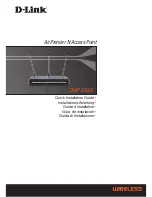
• The destination address consists of one or more Fluidmesh
unit mesh ID numbers, in the form
5.a.b.c
. A mesh ID
number always belongs to a physical Fluidmesh device to
which the multicast traffic must be forwarded.
• Destination-address wildcards can also be used. For
example, the destination address
5.255.255.255
represents all Fluidmesh units in the wireless network.
3.
Enter the multicast group designator in the
Multicast Group
field.
4.
Enter the destination address in the
Destination Address
field.
5.
Click the
add
button.
• The new multicast route will be shown in the
Multicast
routes
section.
Configuring Multicast within a Layer-3 network
Within a typical Layer-3 network, consider a scenario in which Multicast
traffic must be routed in both directions between Fluidity-enabled, vehicle-
mounted radio transceivers, and the global gateway unit that governs data
traffic through the core network.
In the case above, since different multicast groups must be used for
upstream and downstream traffic, consider that group designator
224.5.5.5
is being used to route traffic from the vehicle radios to the global
gateway, and that group designator
224.5.5.6
is being used to route traffic
from the global gateway to the vehicle radios.
Apply the needed multicast rules by doing the steps that follow:
1.
Identify all Mesh End units belonging to each subnet cluster in the
Layer-3 network.
2.
Enable upstream (vehicle to infrastructure) Multicast traffic by
adding multicast route
224.5.5.5 / 5.a.b.c
to the Mesh End unit in
each subnet cluster, where
5.a.b.c
is the actual Mesh ID number
of the global gateway unit.
IMPORTANT
If TITAN is enabled at core network level and dual-
redundant global gateway units are installed, do not
enter the global gateway's actual Mesh ID number as
the Destination Address. Instead, use Destination
Address
5.0.0.0
3.
Enable downstream (infrastructure to vehicle) Multicast traffic by
adding multicast route
224.5.5.6 / 5.255.255.255
to the global
gateway unit,
and
to the Mesh End unit in each subnet cluster.
Device configuration using the configurator interface
© 2021 Cisco and/or its affiliates. All rights reserved.
Page 76 of 138
















































